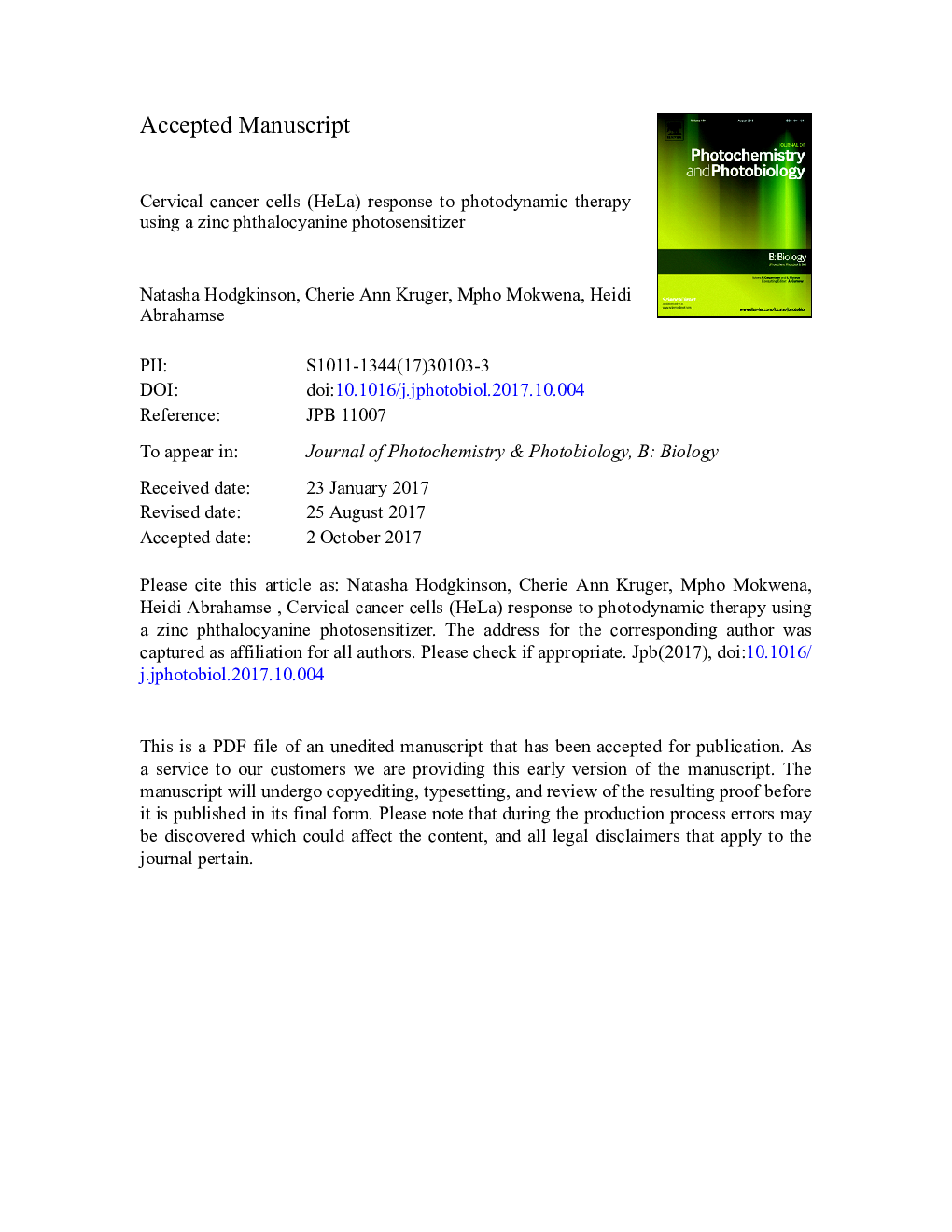| کد مقاله | کد نشریه | سال انتشار | مقاله انگلیسی | نسخه تمام متن |
|---|---|---|---|---|
| 4754265 | 1418056 | 2017 | 25 صفحه PDF | دانلود رایگان |
عنوان انگلیسی مقاله ISI
Cervical cancer cells (HeLa) response to photodynamic therapy using a zinc phthalocyanine photosensitizer
دانلود مقاله + سفارش ترجمه
دانلود مقاله ISI انگلیسی
رایگان برای ایرانیان
کلمات کلیدی
موضوعات مرتبط
مهندسی و علوم پایه
مهندسی شیمی
بیو مهندسی (مهندسی زیستی)
پیش نمایش صفحه اول مقاله

چکیده انگلیسی
Cervical cancer is the most common gynecological malignancy worldwide, and the leading cause of cancer related deaths among females. Conventional treatment for early cervical cancer is radical hysterectomy. In locally advanced cancer the treatment of choice is concurrent chemo radiation. Although such treatment methods show promise, they do have adverse side effects. To minimize these effects, as well as prevent cancer re-occurrence, new treatment methods are being investigated. Photodynamic therapy (PDT) involves the selective uptake of a photosensitizer (PS) by cancer cells, illumination with light of an appropriate wavelength that triggers a photochemical reaction leading to the generation of reactive oxygen and subsequent tumor regression. The effect of PDT on a cervical cancer cell line (HeLa) was assessed by exposing cultured cells to a sulphonated zinc phthalocyanine PS (ZnPcSmix) and irradiating the cells using a 673 nm diode laser. The effects were measured using the Trypan blue viability assay, adenosine triphosphate assay (ATP) luminescence assay for proliferation, Lactate Dehydrogenase (LDH) membrane integrity cytotoxicity assay, and fluorescent microscopy to assess PS cellular localization and nuclear damage. Fluorescent microscopy revealed localization of the PS in the cytoplasm and perinuclear region of HeLa cells. PDT treated cellular responses showed dose dependent structural changes, with decreased cell viability and proliferation, as well as considerable membrane damage. Hoechst stained cells also revealed DNA damage in PDT treated cells. The final findings from this study suggest that ZnPcSmix is a promising PS for the PDT treatment of cervical cancer in vitro, where a significant 85% cellular cytotoxicity with only 25% cellular viability was noted in cells which received 1 μM ZnPcSmix when an 8 J/cm2 fluence was applied.
ناشر
Database: Elsevier - ScienceDirect (ساینس دایرکت)
Journal: Journal of Photochemistry and Photobiology B: Biology - Volume 177, December 2017, Pages 32-38
Journal: Journal of Photochemistry and Photobiology B: Biology - Volume 177, December 2017, Pages 32-38
نویسندگان
Natasha Hodgkinson, Cherie Ann Kruger, Mpho Mokwena, Heidi Abrahamse,